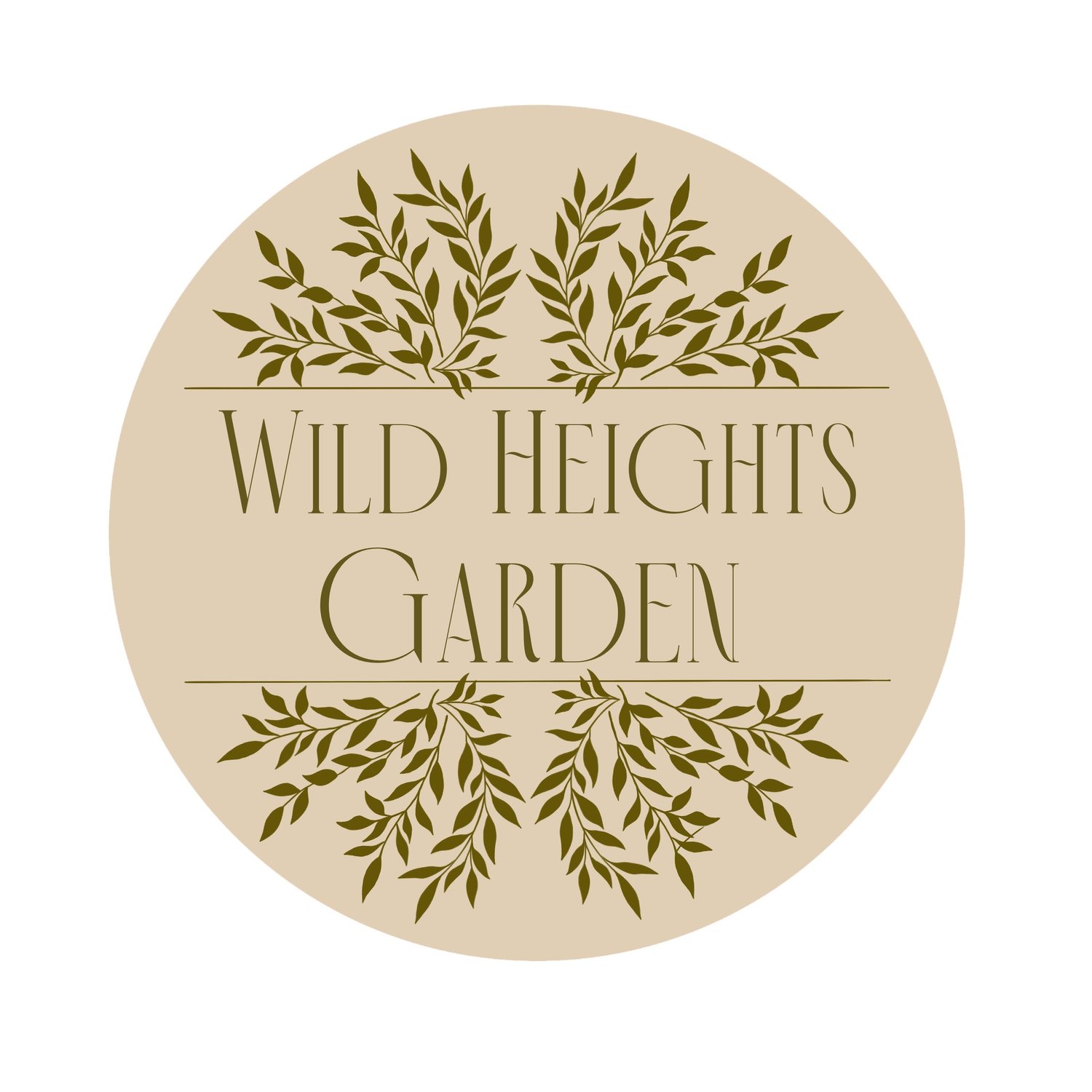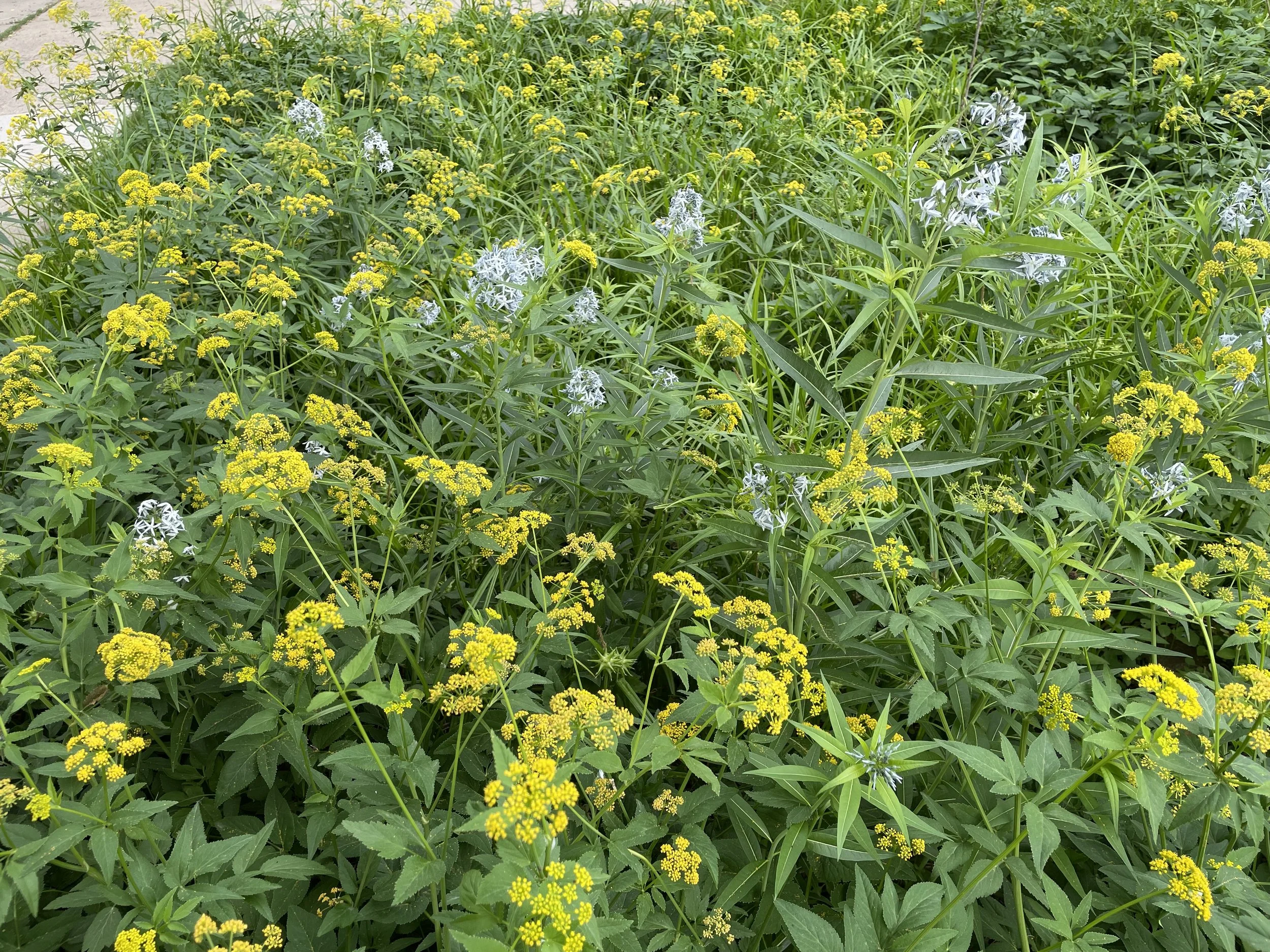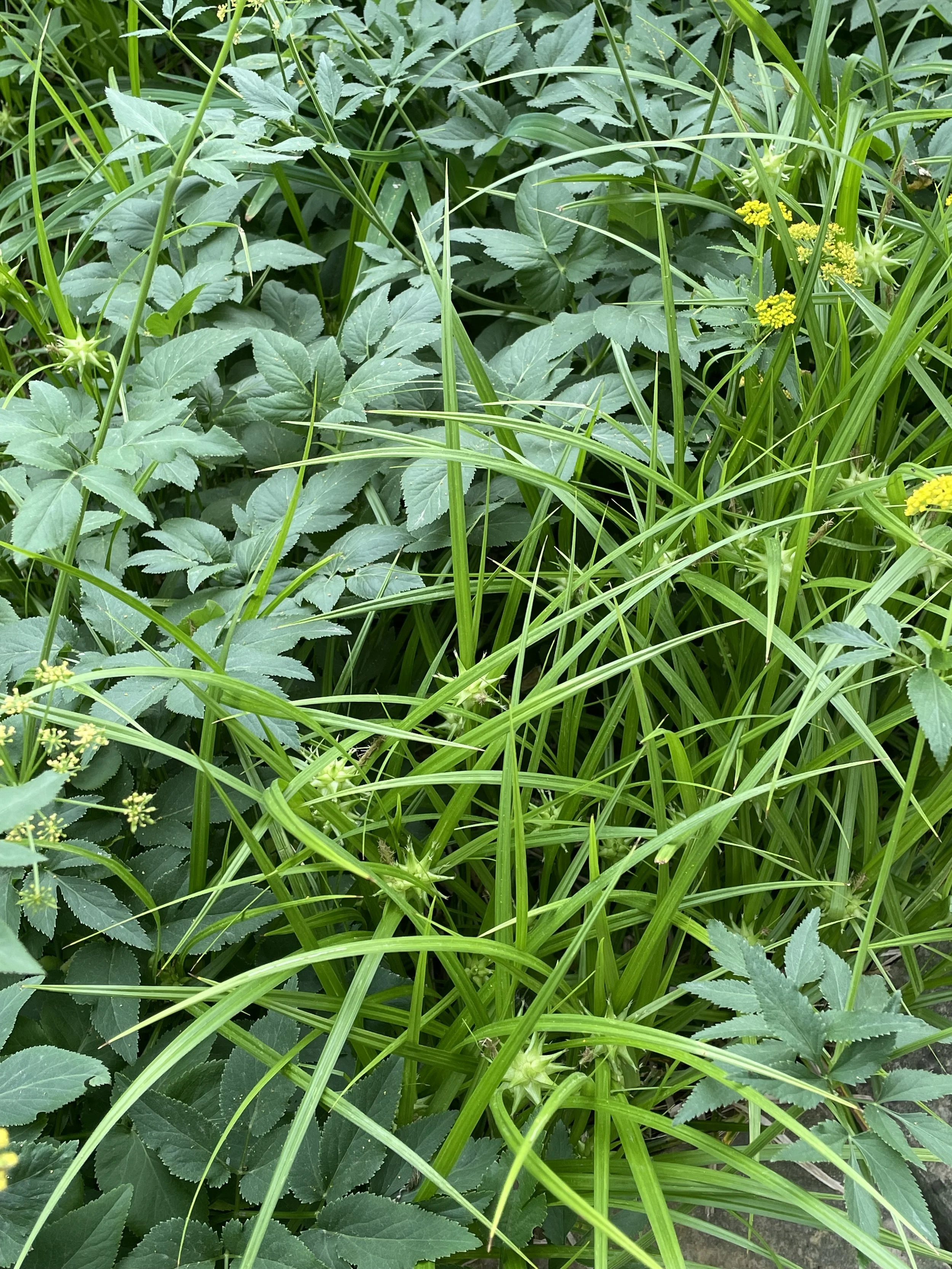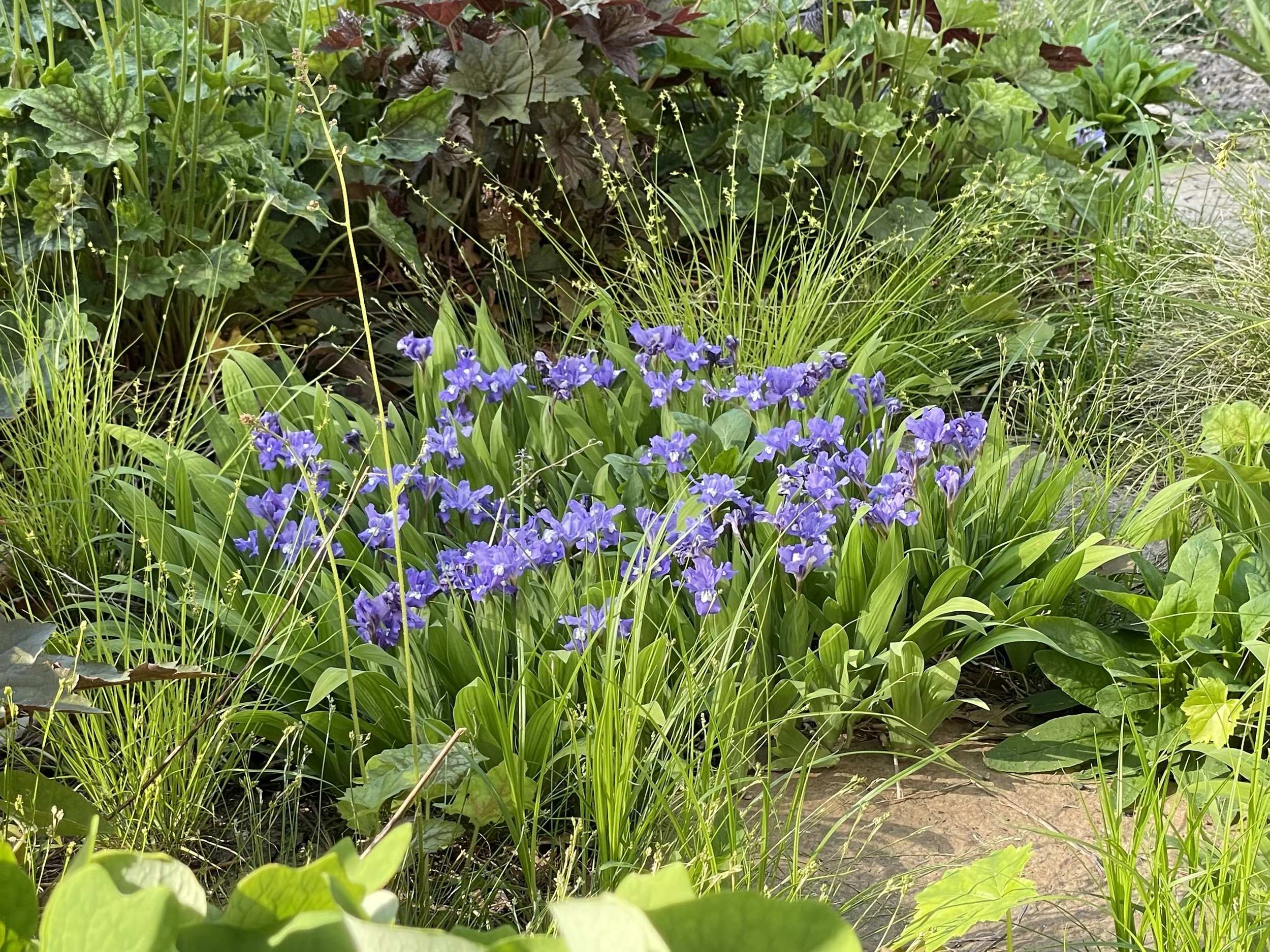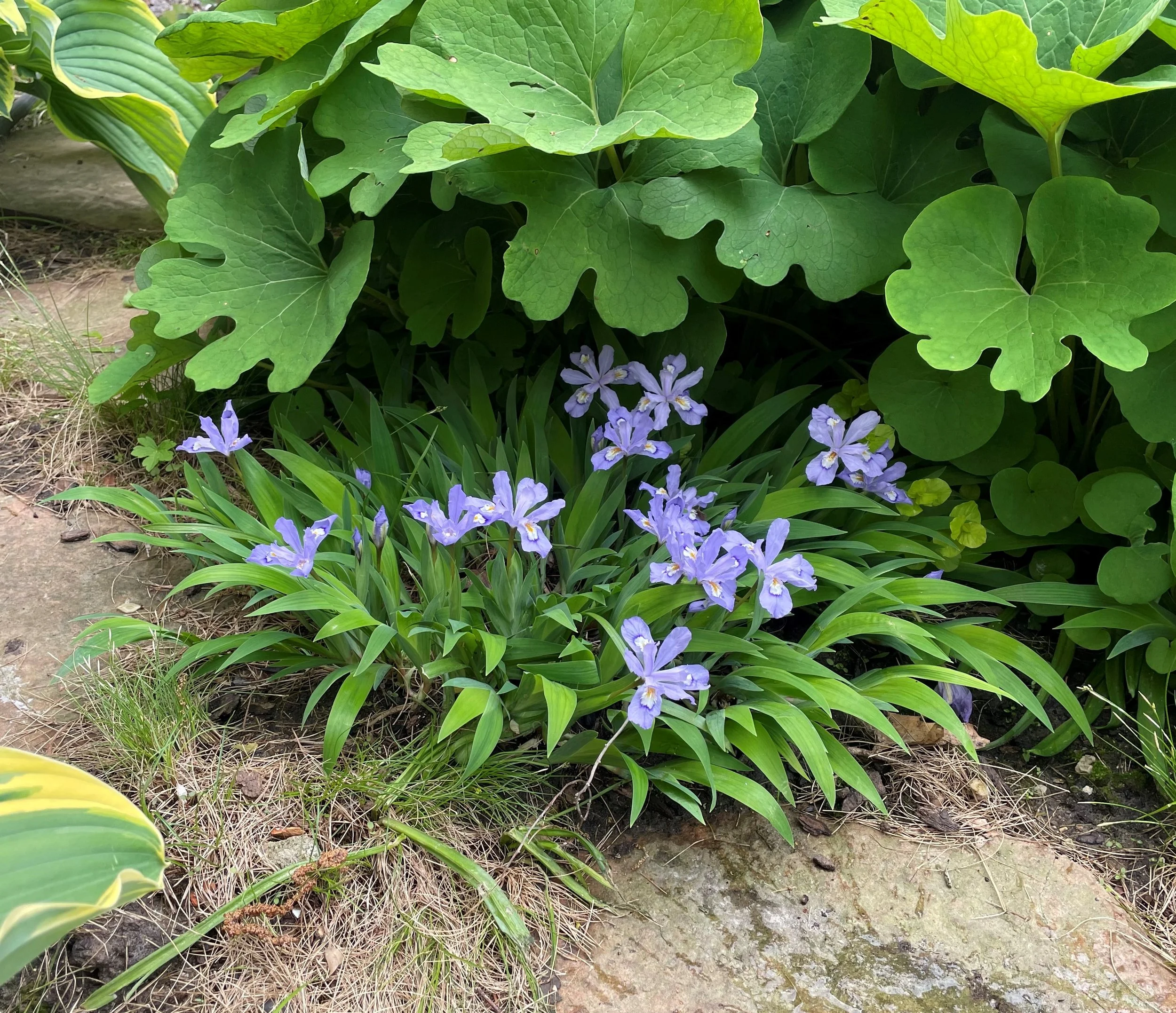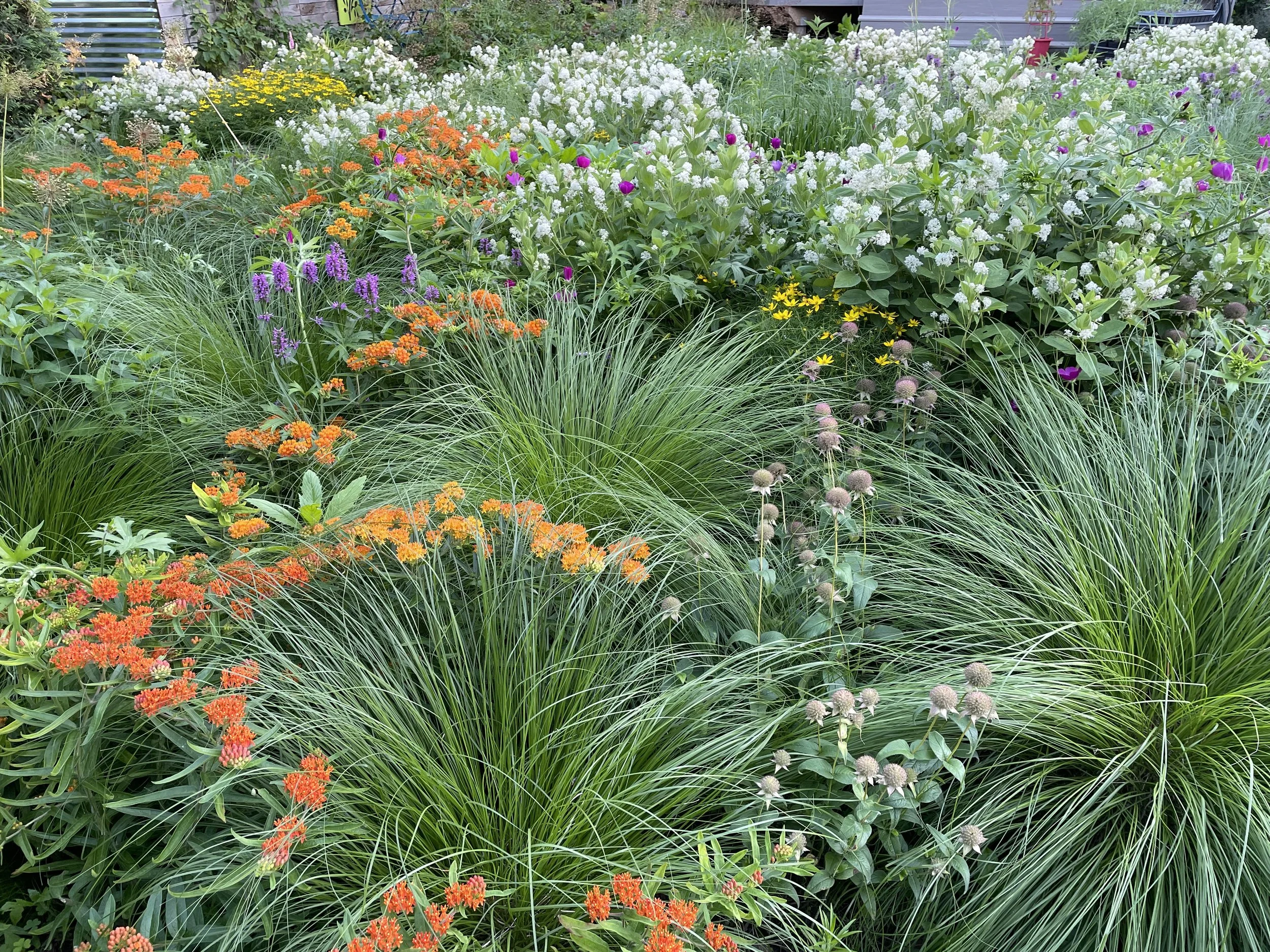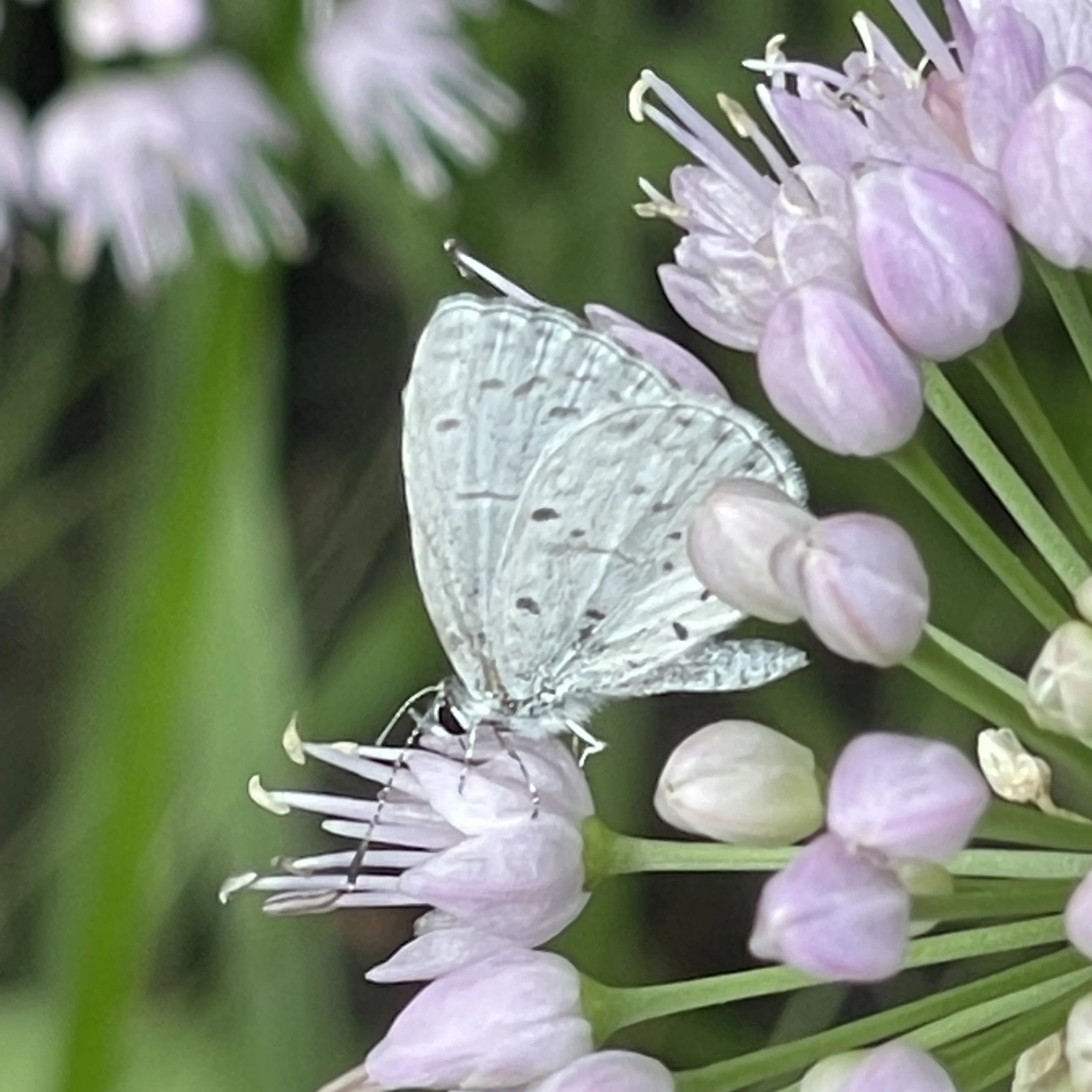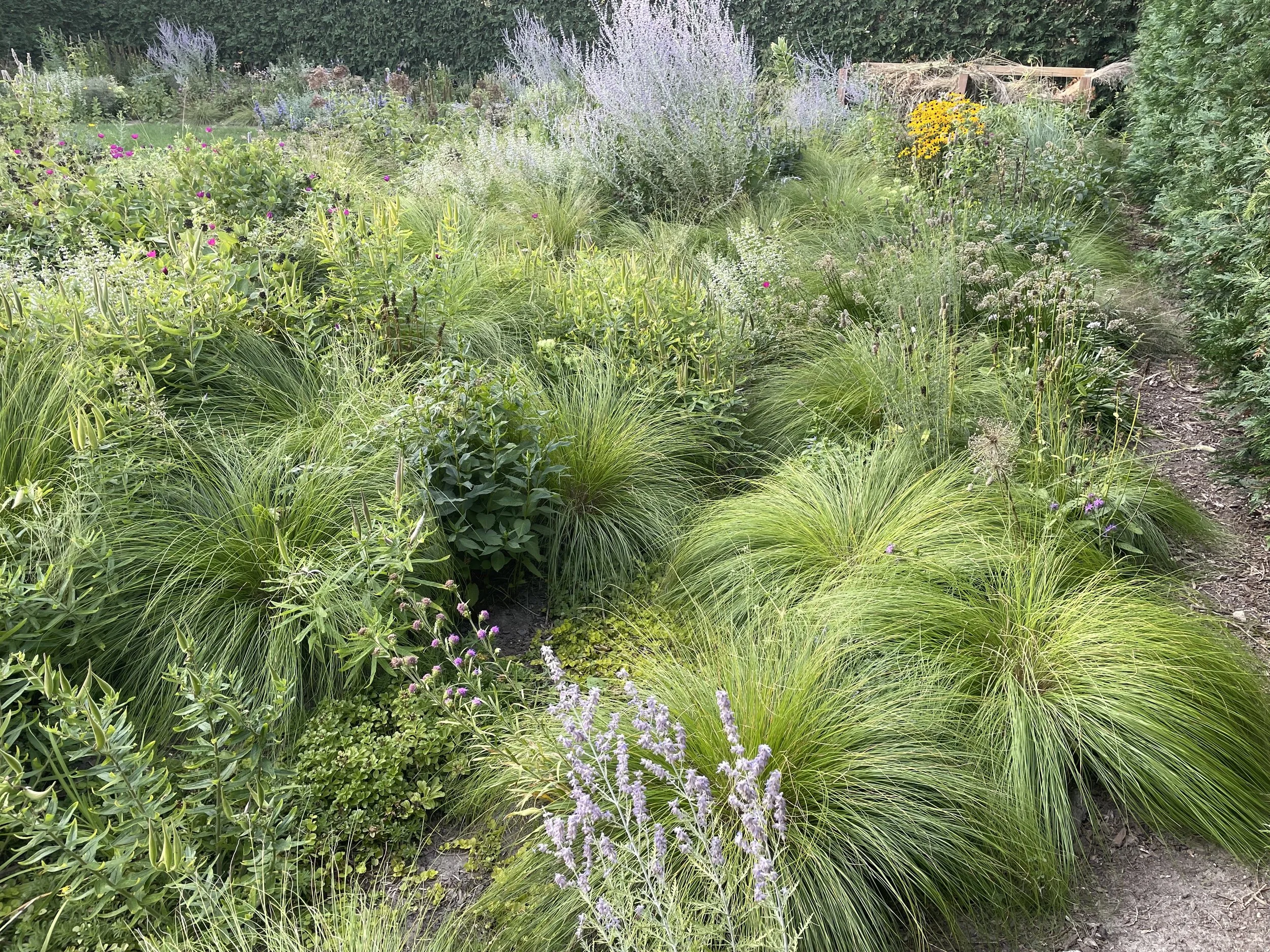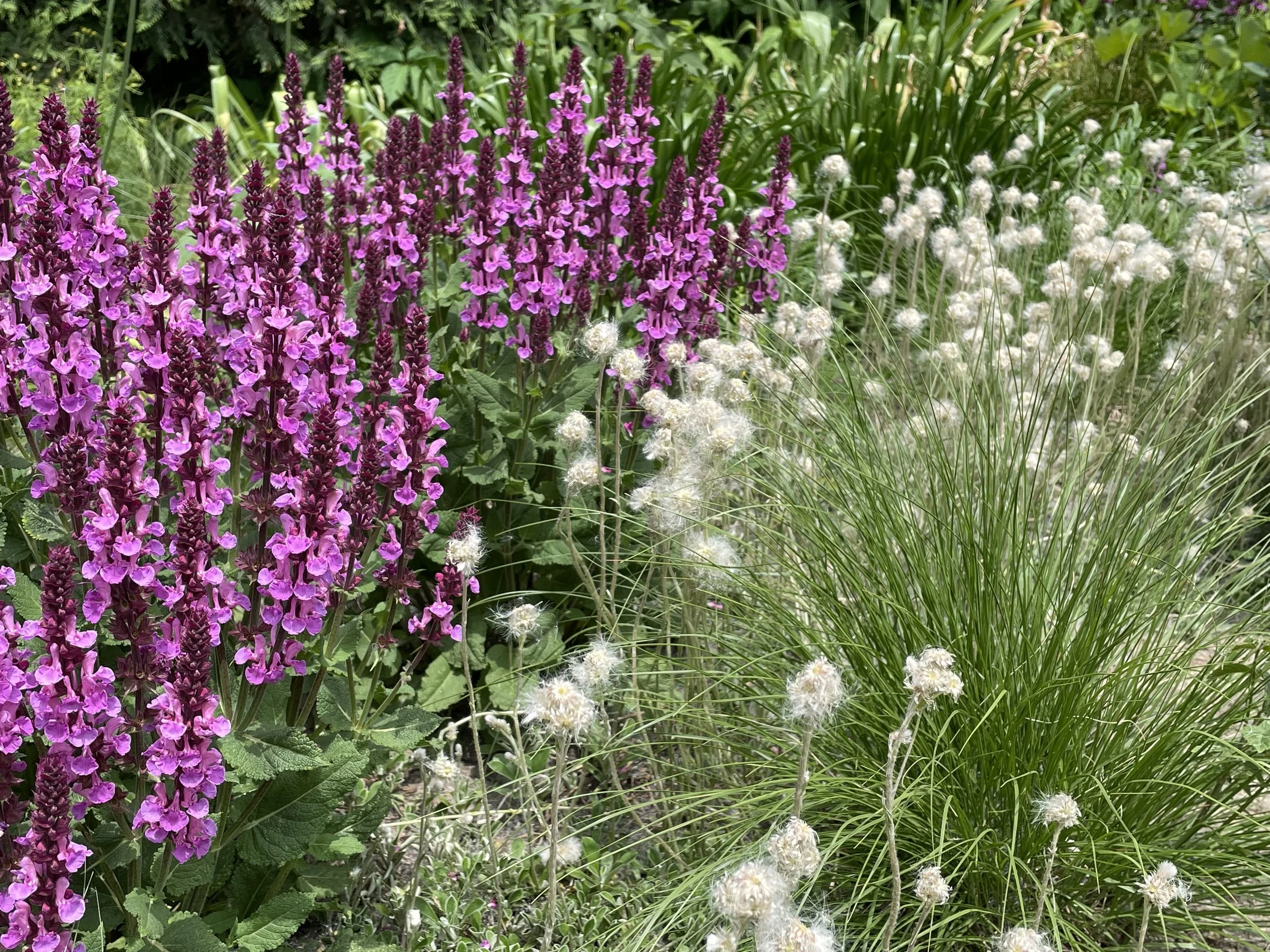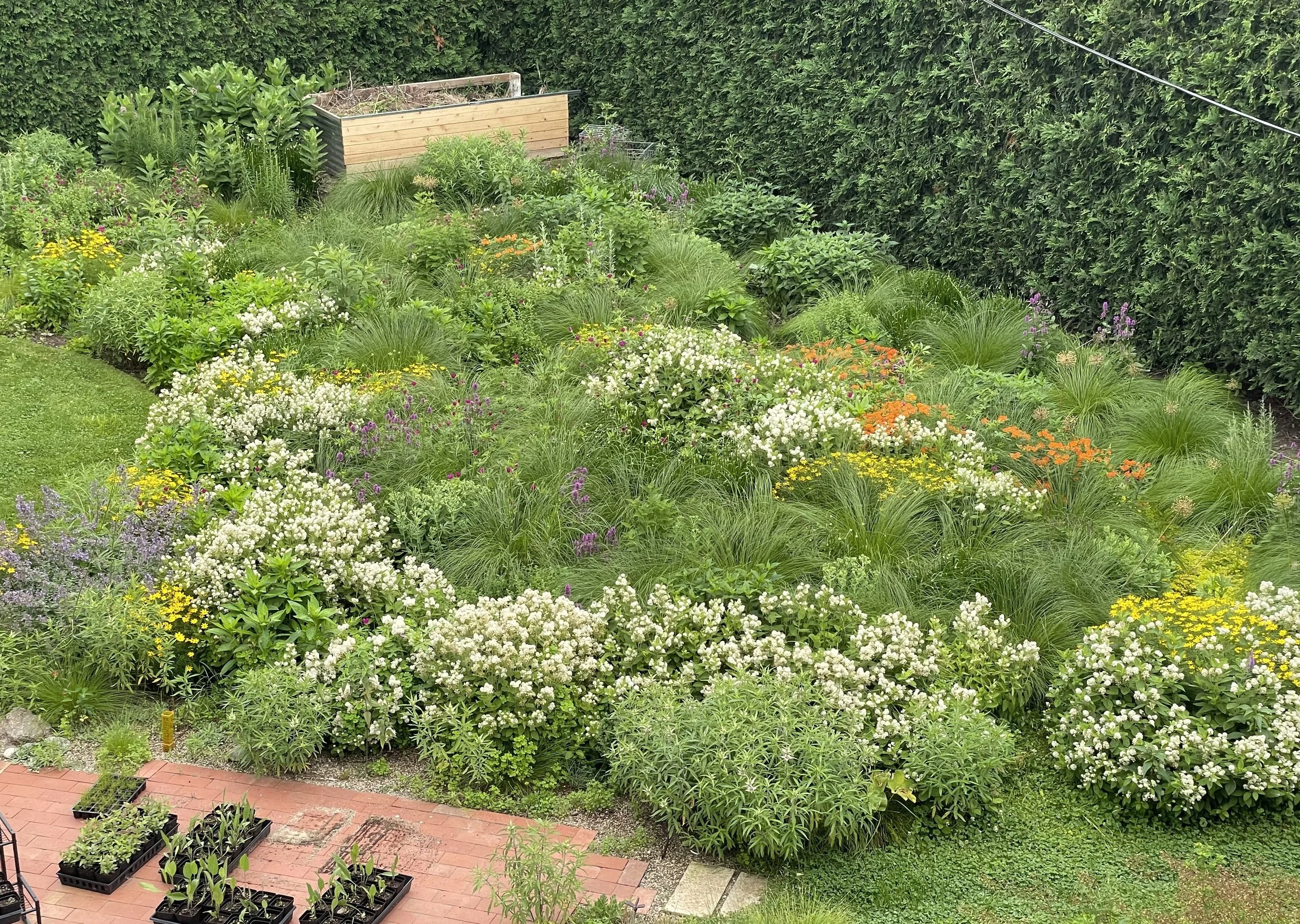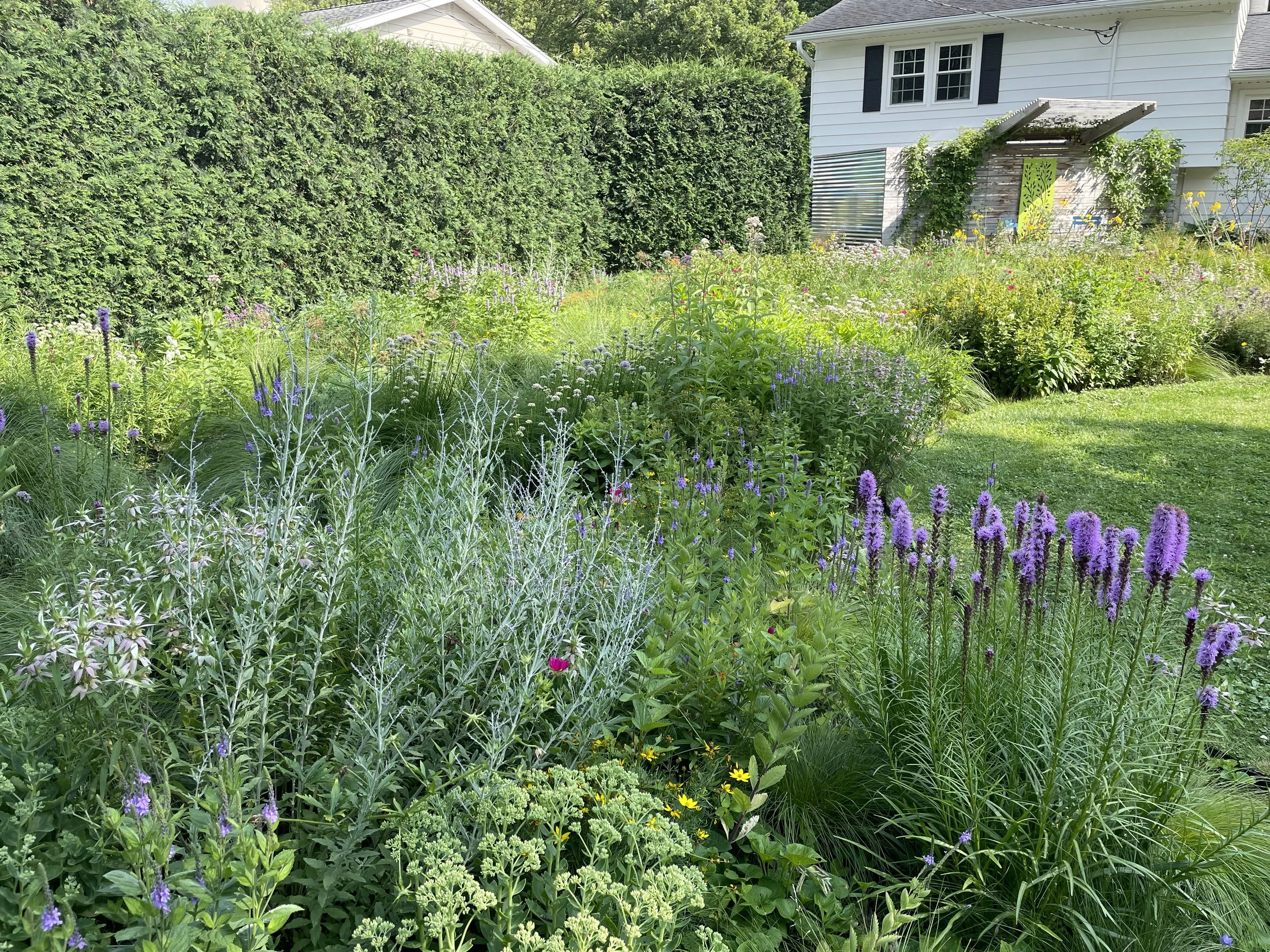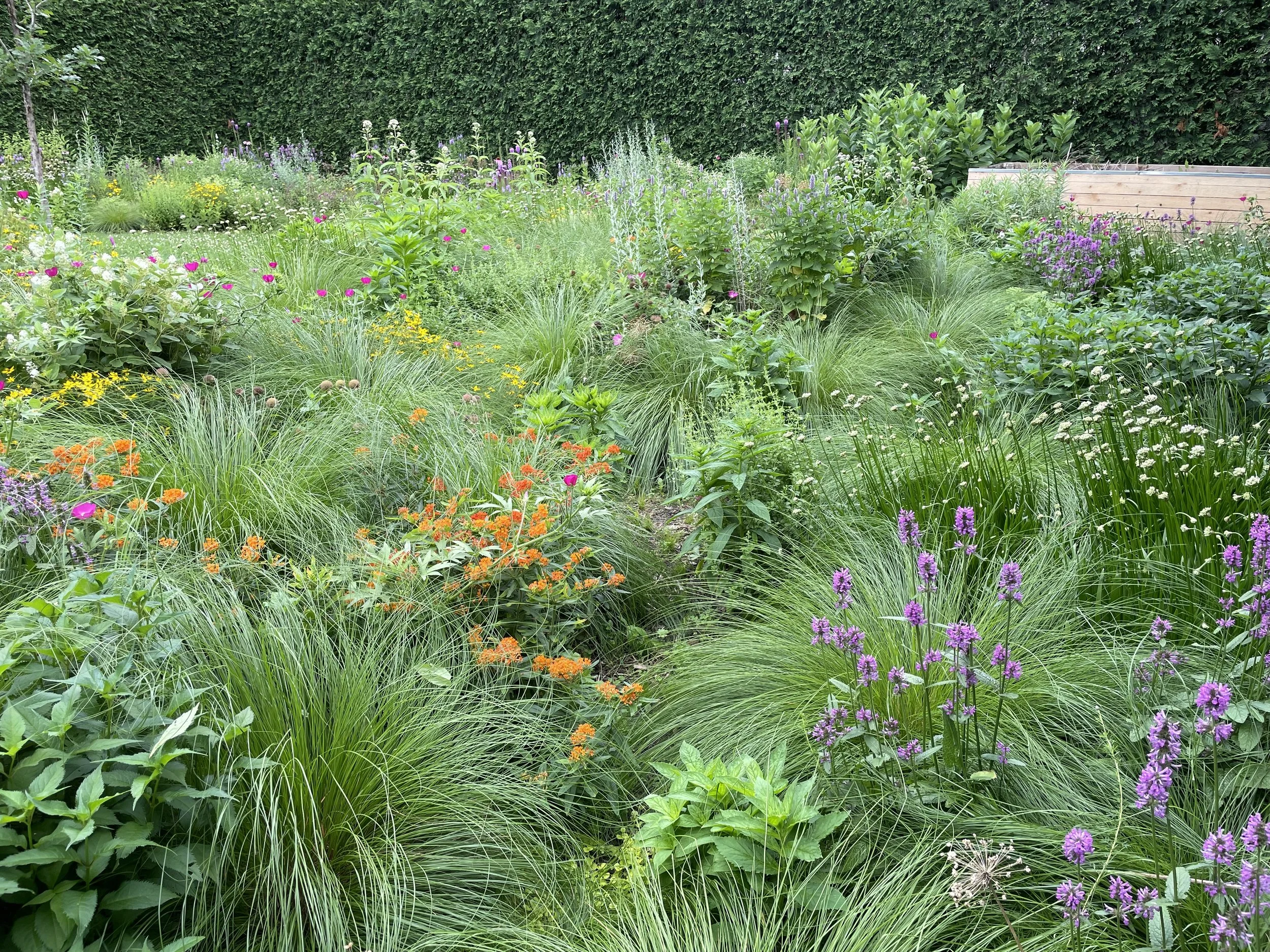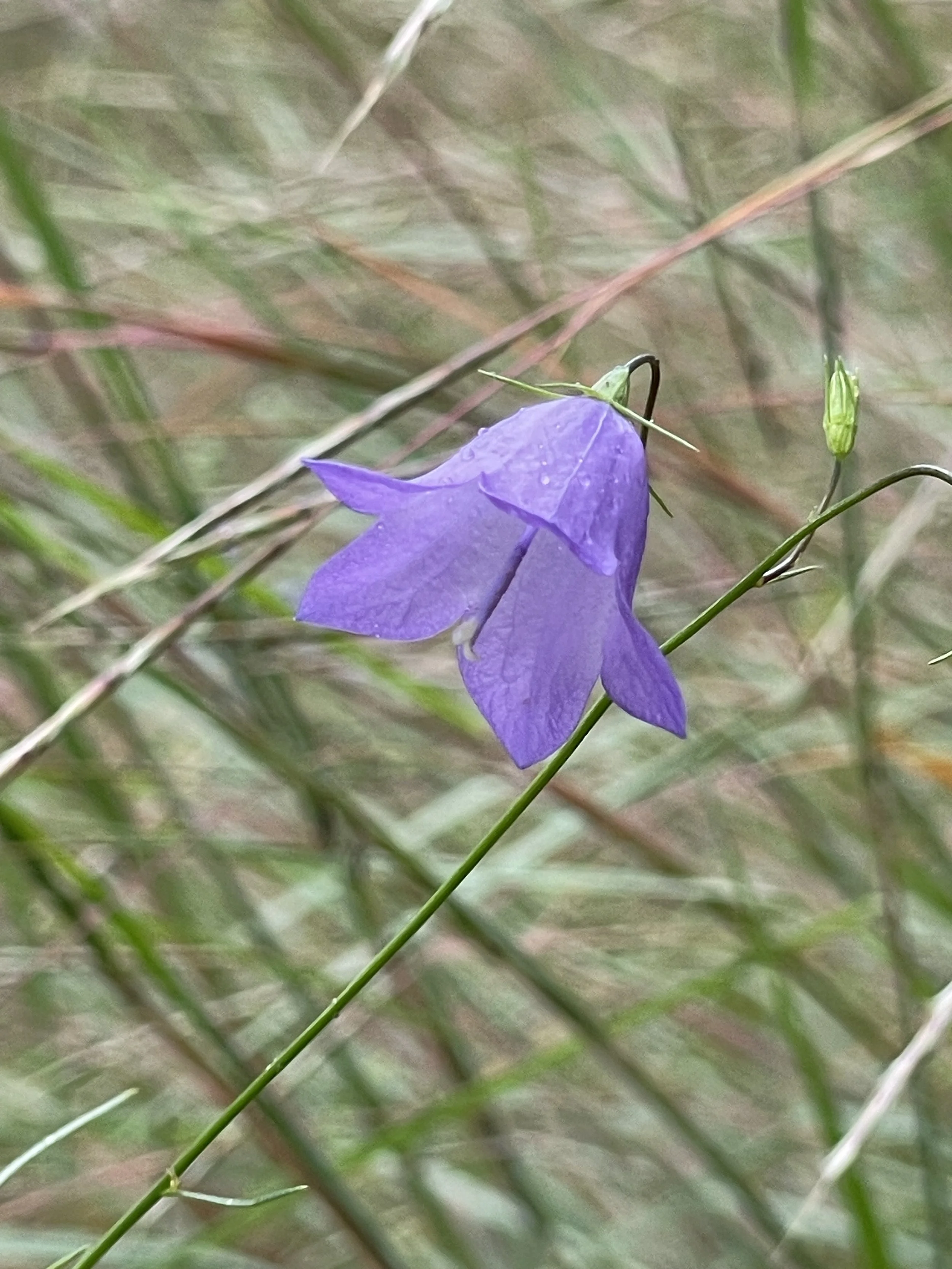
WILD PLANTS FOR A WILD GARDEN
An evolving combination of native water filtering plants
-

2008
In 2008 I designed and installed a raingarden in this street facing corner of the garden. Plantings included Prairie Blazingstar, Turtlehead, Little Bluestem, Golden Alexander, Gray's Sedge and others. Unlike traditional landscaping I let the plantings do their own thing for the most part, as they would in a natural setting.
-
15 years on...
Over time three species came to dominate through various methods; Golden Alexander’s (by seed), Gray’s Sedge (seed and rhizome), and Pink Turtlehead (rhizomes). In recent years I have added Willow Bluestar (above) into the area and more recently added Joe Pyle Weed, and Jewelweed seed as well. These plants also enjoy moist but well drained soils. This editing process is one of the most enjoyable gardening activities.
-
Textural Contrast
The textural contrast between Gray’s Sedge and Golden Alexander foliage is subtle but one of my favorite aspects of the planting. Gray's Sedge is also known as Morningstar Sedge, you can see the star shaped seed heads in the picture above which resemble a medieval Morningstar weapon.
Iris cristata - Dwarf Crested Iris
This small native Iris has sword like leaves characteristic of Irises and beautiful, diminutive flowers.
On the left it is seen growing next to a small flagstone path along with Pennsylvania Sedge and Eastern Star Sedge. Above it sits in the shade of Bloodroot foliage next to the same pathway.
New Jersey Tea - Ceanothus americanus
Pollen and nectar of New Jersey Tea’s white flowers (background) provide food for a variety of insects including bees, butterflies, moths, wasps, flies and beetles. In return the plant accomplishes its singular mission of reproduction as pollen is transferred from one flower to another. The plant also provides food for a number of butterfly caterpillars such as Spring/Summer Azures and Mottled Duskywings. A Summer Azure is pictured above feeding on Wild Onion nectar.
Prairie Dropseed - Sporobolus heterolepis
Prairie Dropseed is the main structural plant in the back garden, forming a matrix which lends some legibility and unity to the planting design. Dropseed is an obligate host to two species of tree hoppers and the seeds are eaten by a number of sparrows and juncos from fall into winter. It’s very beautiful as well!
Antennaria neglecta - Field Pussytoes
Pussytoes is a diminutive plant whose foliage doesn’t reach much more than 2”-3” height. The white flowers bloom in late spring and look like cat’s feet and the seed heads like wispy cotton. Pictured here with perennial Salvia, Pussytoes is a larval host for the American Painted Lady butterfly. It is great for planting around and under taller plants not only for it’s unique beauty but also for it’s weed suppressing ability.
The Meadow
I don’t know what it is about the idea of a wildflower meadow that captures my imagination so thoroughly. Something about the combination of flowers, grasses, and the wildlife they harbor makes me feel at peace. I think that’s why I have been working toward capturing that feel in our garden.
The pictures above focus on the east side of the garden as this is the most mature. The height of of interest in the meadow garden starts toward the end of June and goes to early August. Not that there isn’t interest during the other parts of the season but, at least for now, it is more subdued.
-
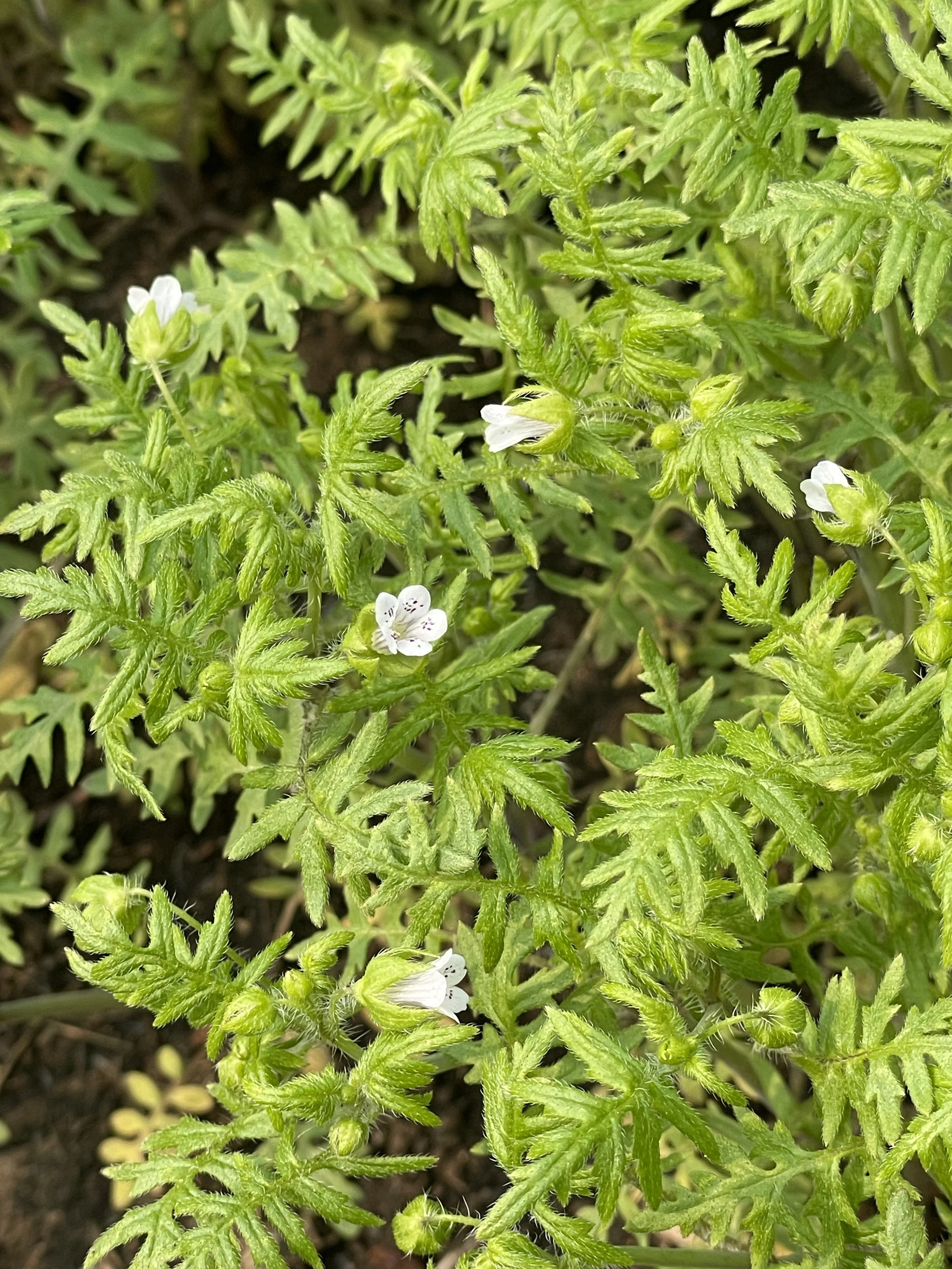
Ellisia nyctelea
AUNT LUCY
Native annuals don’t get much of the spotlight and are often maligned as weeds. I discovered Aunt Lucy in a local park along a woods edge which had recently been disturbed.
I think this low, 3”-6” spreading (via seed), herbaceous plant with beautiful jewel-like flowers could be a good groundcover under other larger perennial plants in a wild garden setting. I haven’t yet been able find a seed supplier so I can get to know Lucy a little better.
-

Impatiens pallida
YELLOW JEWELWEED
A more well known native annual which does live in the garden is yellow Jewel Weed. It is popular for its ability to brighten up wooded (typically moist) areas in late summer. I have seeded it into our drainage swale and rain garden and it pops up in small gaps between the denser, longer lived perennials.
The flowers are popular with hummingbirds and bumblebees and the foliage and stems with caterpillars of several moth species.
-
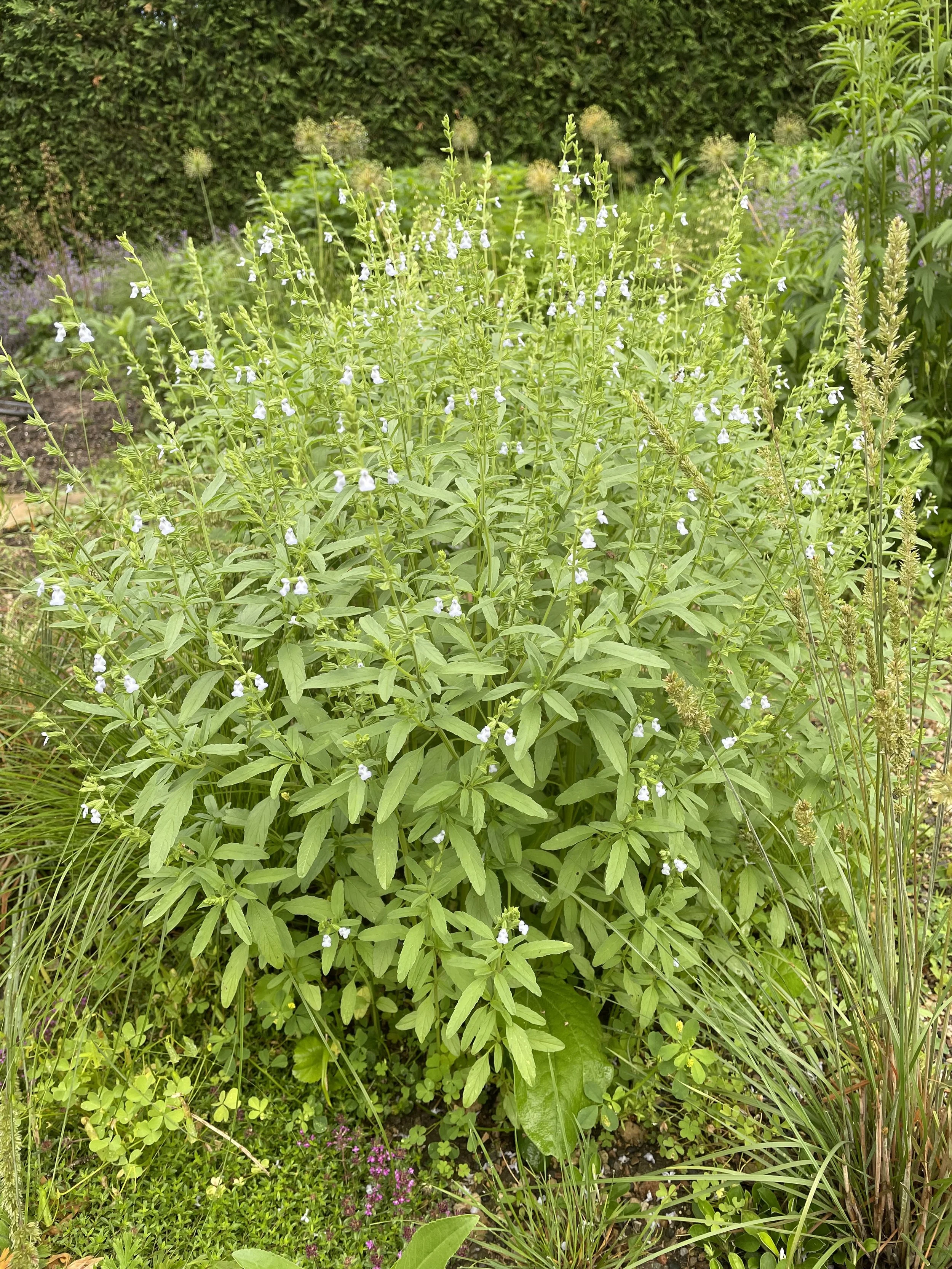
Salvia reflexa
MINTWEED
This native annual Salvia showed up in the garden a few years ago. I think it hitched a ride in some birdseed and landed in the perfect dry, gravelly soil next to the patio.
In Minnesota Mintweed is more prevalent in the drier climate of the southwestern and western counties. It grows to around 12”-18” high and has light blue flowers in mid to late summer. I have welcomed this annual as it is easy to remove from areas where it isn’t desired and attracts a number of pollinators when in bloom.
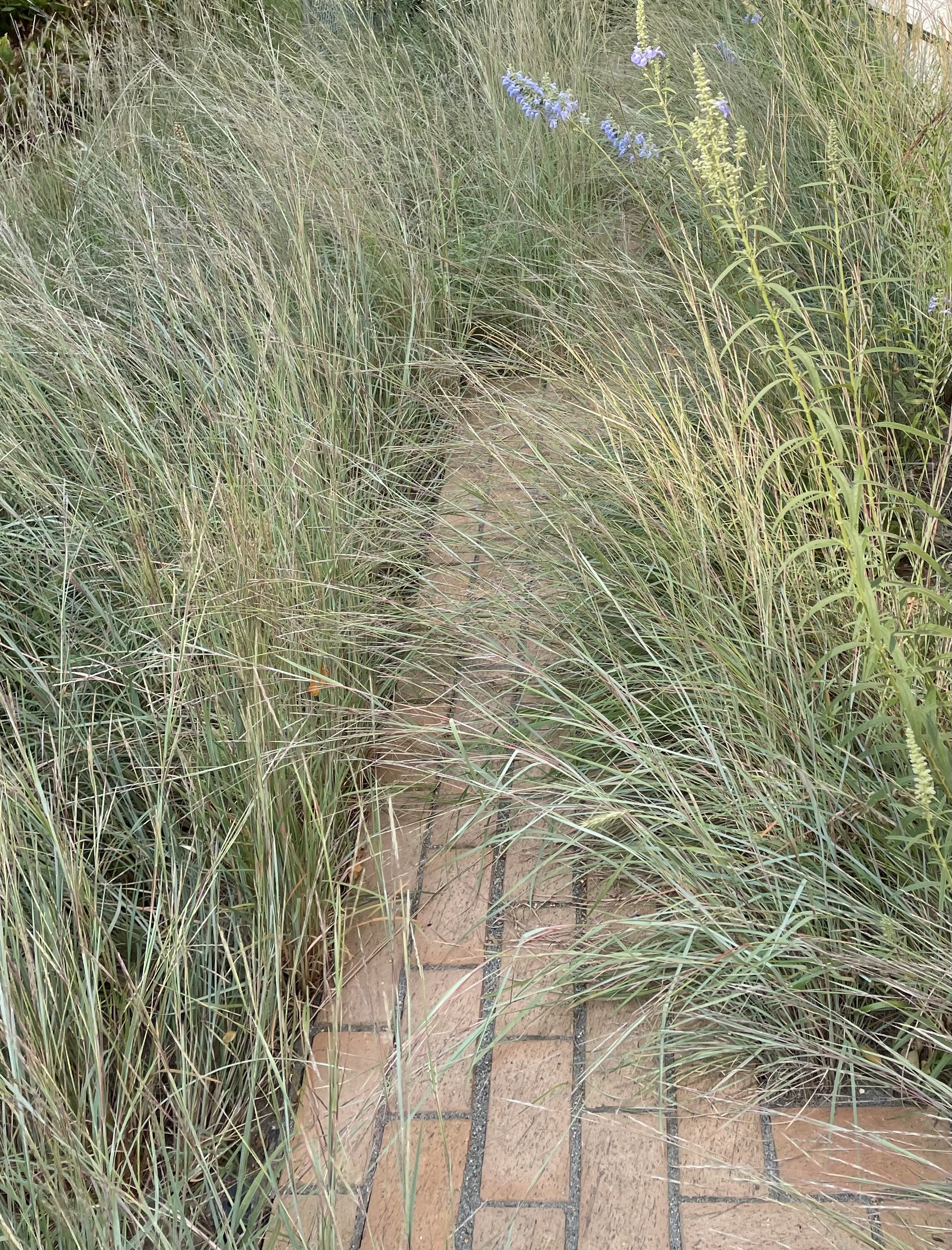
Blue Flowers of Fall
Left: Bellflower - Campanula rotundifolia blooms from mid-summer late into the fall, it’s not uncommon to see a bloom or two into early November.
Middle: Blue Sage - Salvia azurea is a true light blue flower. Said to be on the edge of its cold hardiness zone here in southern Minnesota, it has survived two winters now along the west side of the house where it appreciates the western sun exposure.
Right: Blue Lobelia re-seeds around the garden on bare soil. I help the re-seeding along in a haphazard way each fall as I’m happy for the naturalized feel it helps to provide. I have witnessed many species of bumblebees, flies and other pollinators feasting on the flowers.
